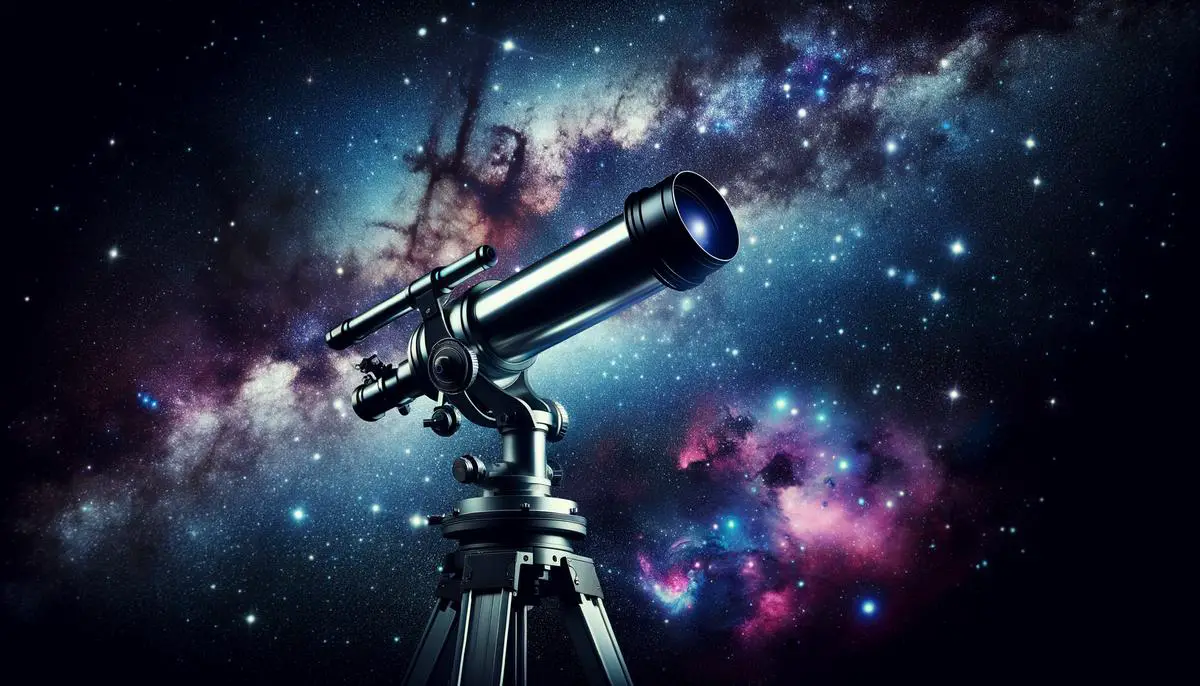Exploring the mysteries of the night sky is a journey that promises endless wonder and discoveries. The first step on this adventure is choosing the perfect telescope, yet the vast array of options can be overwhelming. This essay simplifies the cosmos of choices by focusing on the distinct types of telescopes designed for nocturnal viewing—from the classic refractors and reflectors to the advanced compound models. We’ll uncover how each one can bring the universe closer to you, guiding you through a star-studded selection process that ensures you find a celestial match that’s just right for your exploratory needs.
Types of Telescopes Suitable for Night Sky Viewing
When it comes to exploring the vast expanse of the night sky, choosing the right telescope is crucial for both budding astronomers and experienced stargazers. There are several types of telescopes, but not all are equally well-suited for every skywatcher’s needs.
Reflector telescopes, with their large mirrors, capture abundant light, making distant objects like galaxies and nebulae appear brighter and more detailed. This quality is especially important for night sky enthusiasts who want to delve deeply into deep-sky objects. The popular Dobsonian telescope—a type of reflector—combines a simple design with a large aperture, offering both affordability and powerful performance.
Refractor telescopes, on the other hand, are known for their sharp, high-contrast images and are excellent for viewing the moon and planets. They use lenses to bend light, and their design leads to less maintenance since the optics are sealed from dust and dirt. For someone starting out or interested in solar system objects, a refractor might be the telescope of choice.
Schmidt-Cassegrain telescopes offer a balance of the virtues found in reflectors and refractors. These telescopes are versatile and portable with a closed tube design that keeps the optics clean. Despite their compact size, they have a long focal length, enabling users to see a wide variety of celestial objects with clarity. This makes them an attractive option for those who want a general-purpose telescope for diverse night sky explorations.
Each telescope type has its accessories and addons. Equatorial mounts, for example, can help track the movement of stars across the sky with less effort, and Barlow lenses can double or triple the power of the telescope for closer views.
When selecting the telescope, consider factors such as what celestial objects one is interested in observing, whether the telescope will be transported regularly, and the user’s level of experience. Night sky viewing can be personal and subjective, so the “most suitable” telescope will vary from one enthusiast to the next, but reflectors, refractors, and Schmidt-Cassegrain telescopes cover a broad range of options for many.
Enthusiasts ready to purchase should also weigh portability against the complexity, the ease of setup, and the budget. Also, keep in mind the potential growth in the hobby, which might dictate investing in a telescope that can accommodate future interests and desired features. With thoughtful consideration, the perfect telescope can open up a universe of awe-inspiring sights and offer a lifetime of cosmic exploration.
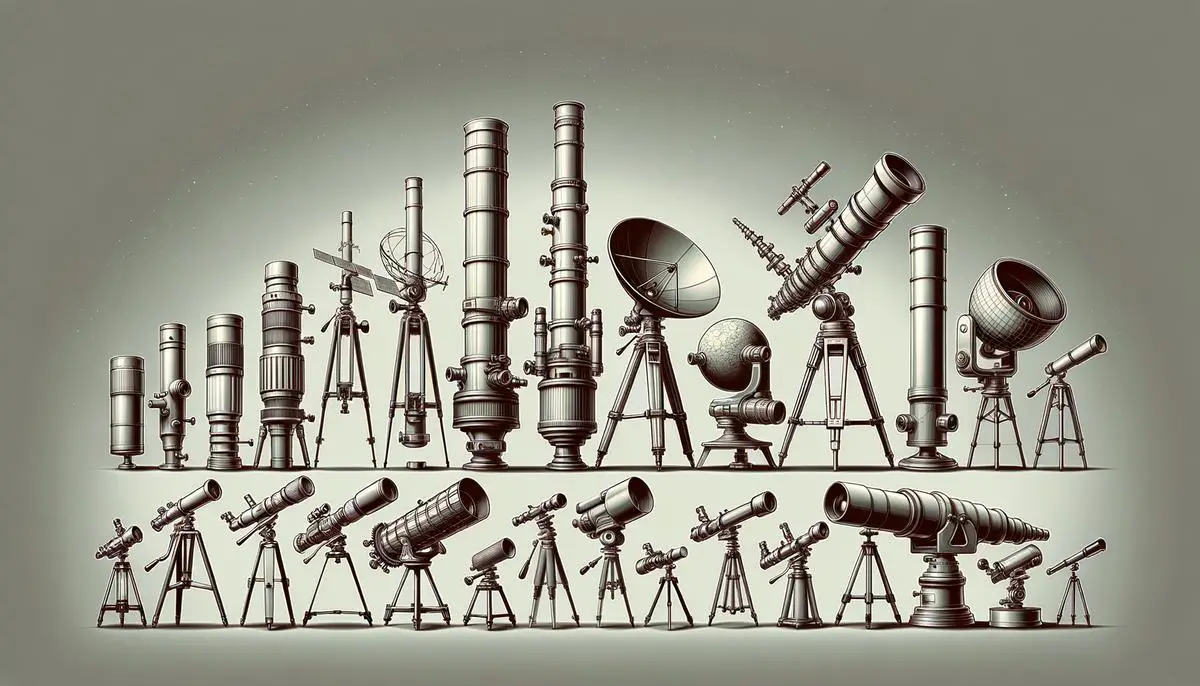
Key Features to Consider when Choosing a Telescope
Selecting the right telescope for night sky viewing is an endeavor that opens doors to the wonders of the universe. When considering this significant investment, several critical features must be prioritized to ensure each stargazing session is as breathtaking as the last.
Optical Quality and Aperture Size:
One of the most pivotal aspects when choosing a telescope is optical quality. High-quality optics will produce sharp, clear images, making celestial bodies stand out against the vast canvas of space. Furthermore, the aperture size – the diameter of the telescope’s primary lens or mirror – is crucial. A larger aperture gathers more light, bringing dimmer objects into view and revealing finer details of bright objects like planets and nebulae. For avid night watchers aiming to tease out the faintest galaxies, a generous aperture is non-negotiable.
Magnification and Eyepieces:
Magnification is a feature often misunderstood. While high magnification might seem appealing, it’s the telescope’s ability to handle different magnifications while maintaining clarity that’s important. This adaptability is primarily determined by the focal length of the telescope and the eyepieces used. Quality eyepieces contribute significantly to the final image’s sharpness and field of view. A set of varied eyepiece sizes provides flexibility, allowing viewers to switch from a wide, sweeping view of the Milky Way to a focused look at Saturn’s rings.
Tracking and Mount Stability:
For night sky enthusiasts aiming to follow objects as they travel across the sky, a stable and precise mount is indispensable. Equatorial mounts, which can be aligned with the Earth’s axis, are particularly advantageous for tracking celestial movements smoothly. They facilitate prolonged observation and are especially useful for those interested in astrophotography. The telescope mount must offer stability at every magnification level, ensuring that even the most subtle celestial dance is observed without interruption.
Ease of Use:
A telescope should not only match one’s space-watching ambitions but also align with their technical comfort level. For beginners, a telescope that’s easy to set up and use is paramount. An overly complex system might discourage budding astronomers, so user-friendliness should be a priority. Automated telescopes with “Go-To” functions can locate celestial bodies automatically, which is excellent for beginners, but these features should not come at the expense of learning basic stargazing skills.
Light Pollution:
An often overlooked but important aspect is the telescope’s capability to perform well in less-than-ideal viewing conditions, such as those with light pollution. Some telescopes are designed to cut through the glow of city lights better than others, making them more suitable for urban astronomers. Specialized eyepieces and filters that enhance contrast can mitigate the effects of light pollution and are worthwhile considerations.
Choosing a telescope is a personal journey. It’s about finding the right tool to open up the cosmos according to one’s own needs and aspirations. So before taking the plunge into endless starry nights, ensure the telescope ticks these boxes: superb optical quality, decent aperture size, versatile magnification with quality eyepieces, a stable mount with tracking capability, ease of use, and the ability to adapt to local viewing conditions. With these priorities in focus, selecting the perfect telescope becomes a gateway to not just viewing the night sky, but truly connecting with the universe.
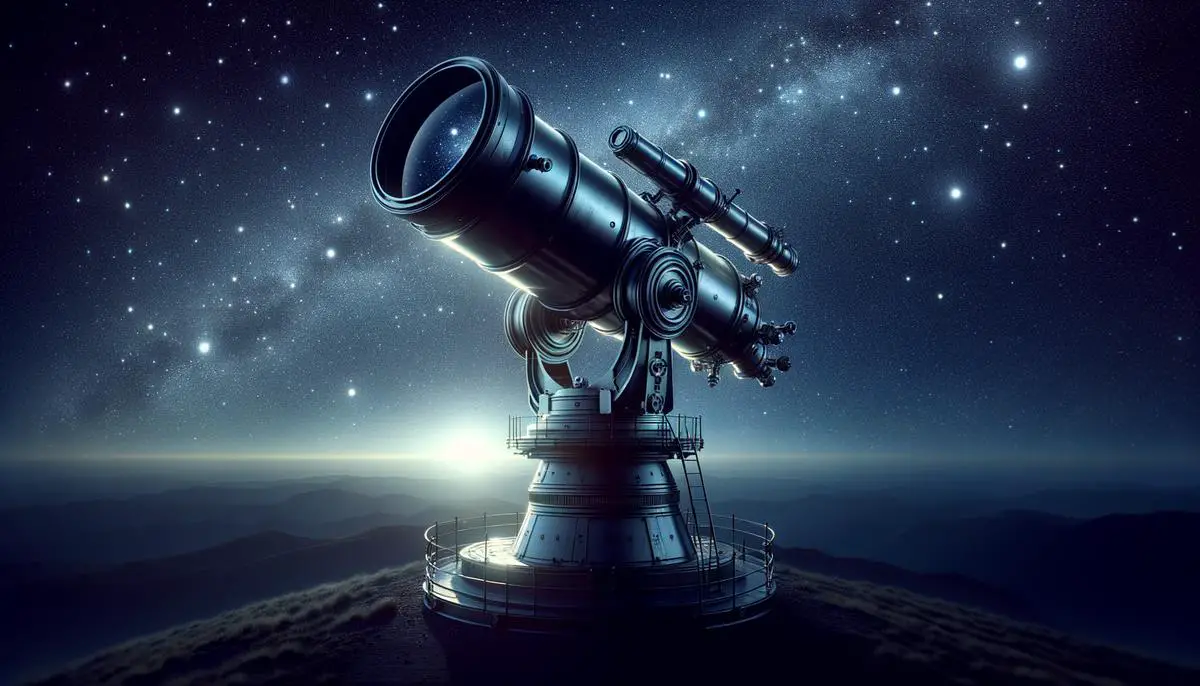
Top Telescopes on the Market for Night Sky Viewing
Discovering the finest telescopes for night sky viewing requires delving into specific models that have earned their reputation among stargazers. Top-rated telescopes allow for clear, detailed observations of celestial wonders. For those ready to embark on nocturnal celestial journeys, here are some stellar options:
- The Celestron NexStar 8SE Telescope is a favorite among both beginners and seasoned astronomers. This Schmidt-Cassegrain model strikes a balance between portability and power, with its 8-inch aperture capturing ample light to unveil the subtleties of distant galaxies and nebulae. Its fully automated GoTo mount simplifies locating over 40,000 celestial objects, making it a smart choice for a hassle-free stargazing experience.
- Another highly acclaimed instrument is the Sky-Watcher 10” Traditional Dobsonian Telescope. This reflector telescope’s large 10-inch aperture excels in harvesting light, making it ideal for deep-sky viewing. Although its bulkiness may challenge portability, its simple design is perfect for beginners wanting to dive deep into the cosmos without the complexity of advanced technology.
- For those seeking crisp images of the moon and planets, the Orion ED80T CF Triplet Apochromatic Refractor Telescope offers exceptional clarity. The refractor’s design minimizes chromatic aberration, elevating the quality of planetary observations. Its carbon fiber body reduces weight, aiding astronomers who frequently switch locations to escape light pollution.
- More advanced explorers might lean towards the Meade LX90-ACF Telescope. This advanced compound telescope combines a sizable 12-inch aperture with sophisticated features like GPS and AutoAlign technology. The result is an instrument that not only gathers impressive light for vivid views of deep-sky objects but also assists in accurately aligning with celestial bodies.
The choice of telescopes is further enriched by the presence of additional accessories that can enhance the viewing experience. From specialized filters that mitigate light pollution to high-quality eyepieces that expand the field of view, customizing the telescope setup is a continuous journey that adjusts to the evolving passion for astronomy.
Whether an observer dreams of gazing at Saturn’s rings, navigating the craters of the moon, or unraveling the mysteries of distant galaxies, the night sky is an open book with the right telescope as your guide. Choosing an instrument that aligns with aspirations, expertise, and the allure of the cosmos opens the door to a universe of discovery and perpetual wonder.
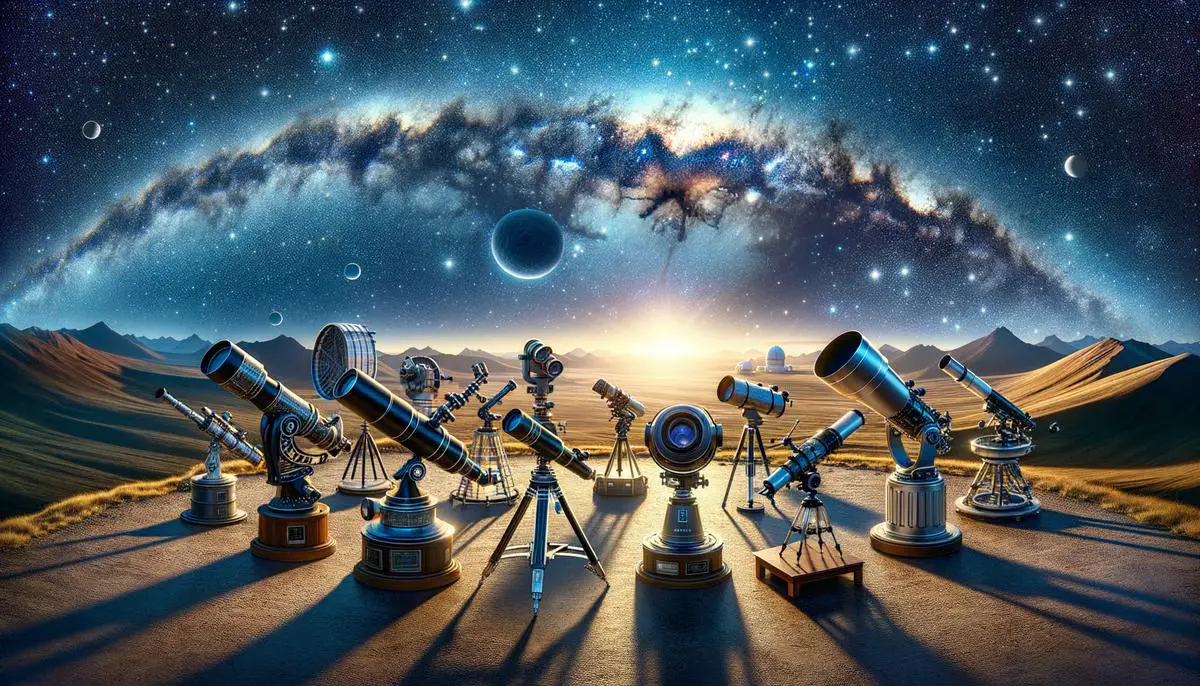
Accessories and Enhancements for Night Sky Viewing
Continuing from where we left off, the right accessories can significantly enhance your nighttime sky viewing, making the celestial dance more vivid and captivating. Accessories can range from simple upgrades like better eyepieces to sophisticated astrophotography gear. Here, we delve into essential accessories that can transform your stargazing experience.
High-Quality Eyepieces:
Eyepieces are the unsung heroes of astral observation. A good quality eyepiece can improve image sharpness and brightness. More experienced stargazers might consider investing in a set of eyepieces with various focal lengths to switch between wide field views and detailed close-ups.
Filters:
Filters are another indispensable accessory. They can help to bring out details on planets or reduce glare from the moon. For example, a lunar filter will enhance the visibility of craters and ridges by cutting down on brightness. A light pollution filter, on the other hand, suppresses artificial light frequencies, allowing celestial objects to stand out amidst city skylines.
Finder Scopes and Red Dot Finders:
Aligning your telescope with the stars can sometimes be a challenge. Finder scopes and red dot finders simplify this task by providing a secondary scope with a wider field of view to locate objects before honing in with the primary telescope. A red dot finder projects a small red dot onto a transparent window, showing exactly where the telescope is pointed.
Power Supply Solutions:
For those using computerized mounts or electronic focusers, a reliable power supply is crucial. Portable power packs are available that not only power your telescope gear for hours but can also recharge your mobile devices.
Astrophotography Equipment:
For those interested in capturing the night sky, a range of astrophotography accessories exist. A solid T-ring adapter is the bridge between your DSLR camera and the telescope, transforming the scope into a long telephoto lens. For more advanced photographers, cooled astronomical cameras and auto-guiders can provide better image quality and tracking accuracy, respectively.
Comfort Enhancements:
Comfort might not be the first thing on your mind when stargazing, but it plays a significant role in the experience. An adjustable chair or a warm blanket can make lengthy observation sessions far more enjoyable. Additionally, a dimmable red flashlight can preserve your night vision while allowing you to see your equipment.
Storage and Transport:
Finally, safe storage and easy transport are vital for your equipment’s longevity and your convenience. A durable, padded telescope case will protect your investment from bumps and dust. A trolley or a set of straps can also aid in moving the equipment to your preferred observation spot without strain.
In conclusion, the expansion of your bespoke astronomical toolkit can serve as a bridge to the stars, making your observations not just possible, but truly extraordinary. The vast canvas of the night is there for the beholding, and with the right accessories, your celestial journey is bound to be both exhilarating and profoundly rewarding.
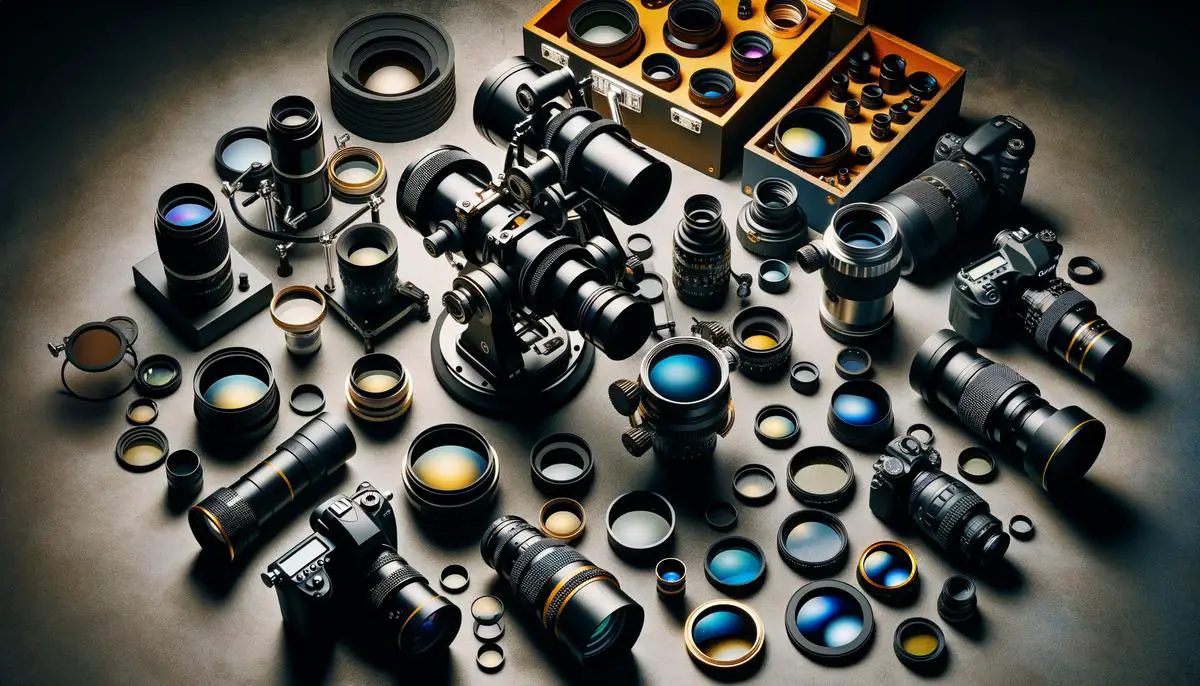
Maintaining and Troubleshooting Common Telescope Issues
With your telescope entry complete and standing as your ticket to the cosmos, maintaining it in top condition becomes your next quest. A well-maintained telescope can yield years of stargazing pleasure, so let’s dive into the finer details of keeping your celestial window clear.
Firstly, dealing with dust and debris is paramount. The delicate optics of your telescope are magnets for dust particles, which can cloud your view of the heavens. Use a soft, camel-hair brush or canned air to gently remove dust from the lens or mirror surfaces, always taking care to follow the manufacturer’s guidelines. Do this in a dust-free environment to avoid reintroducing particles.
Condensation can also be a stargazer’s nemesis. When bringing your telescope in from the cold, allow it to acclimate to room temperature before capping the lenses. This prevents moisture from settling on the optics and potentially causing mold growth. Silica gel packets can be your allies here, nestling in your storage case to ward off dampness.
For the infrequent, yet necessary deep clean, a solution of distilled water and isopropyl alcohol in equal parts, applied sparingly with a cotton ball or optical tissue, can work wonders. Starting at the center and spiraling outward in a single motion helps to avoid streaks.
Mirrors in reflector telescopes may occasionally require re-coating. This is not a frequent necessity, but it’s essential to retain the mirror’s reflectivity. This task is best left to the professionals, so don’t hesitate to reach out for expert care.
Collimation, or the alignment of optics, is especially critical for reflector telescopes. Misaligned mirrors can result in blurred images or double stars. Most reflector telescopes come with collimation tools and instructions. Regular checks ensure that your telescope continues to provide crisp views.
A sturdy mount is your telescope’s foundation, but it’s not immune to wear. Regularly inspect all moving parts for signs of wear or loose screws, and apply any necessary lubrication to keep motions smooth. This not only aids in tracking celestial objects but also preserves the equipment.
Firmware updates for computerized telescopes can enhance functionality and correct software bugs. Keep abreast of updates from your telescope manufacturer and install them as needed, ensuring your stargazing sessions benefit from the latest advancements.
Lastly, safe storage is not to be underestimated. A dustproof and ideally shockproof case can protect your investment from accidental bumps and the accumulation of dust and dirt.
With these maintenance tips implemented, your telescope will be primed for a long life of unlocking the secrets of the night sky, transporting you to distant galaxies and ancient starlight with each encounter.
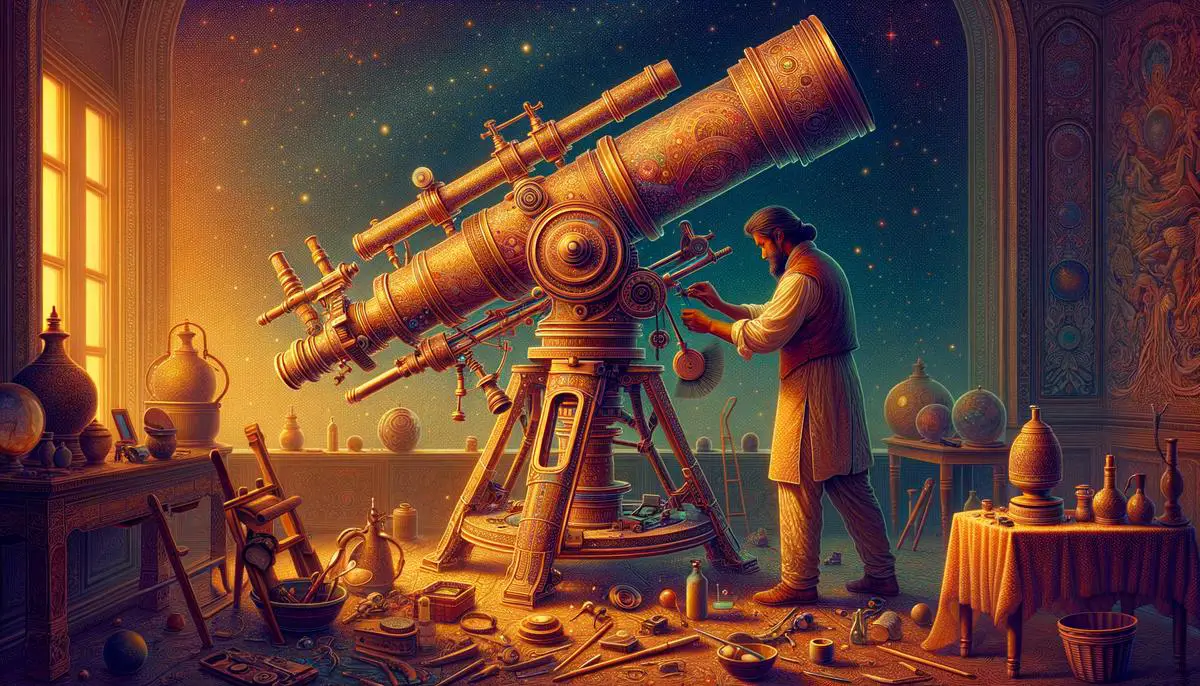
From the crisp clarity of a new moon to the cascade of a meteor shower, a telescope is your portal to the universe’s grand theatre. Having explored the varied telescope types, key features, top market picks, essential accessories, and maintenance know-how, you’re now equipped to navigate the stars with confidence. Remember, the telescope is more than a tool—it’s a companion on your cosmic quest, illuminating the wonders of the night and bringing the secrets of space a little closer to home. So, set your sights skyward and prepare for an astronomical adventure that’s truly out of this world.
![]()
